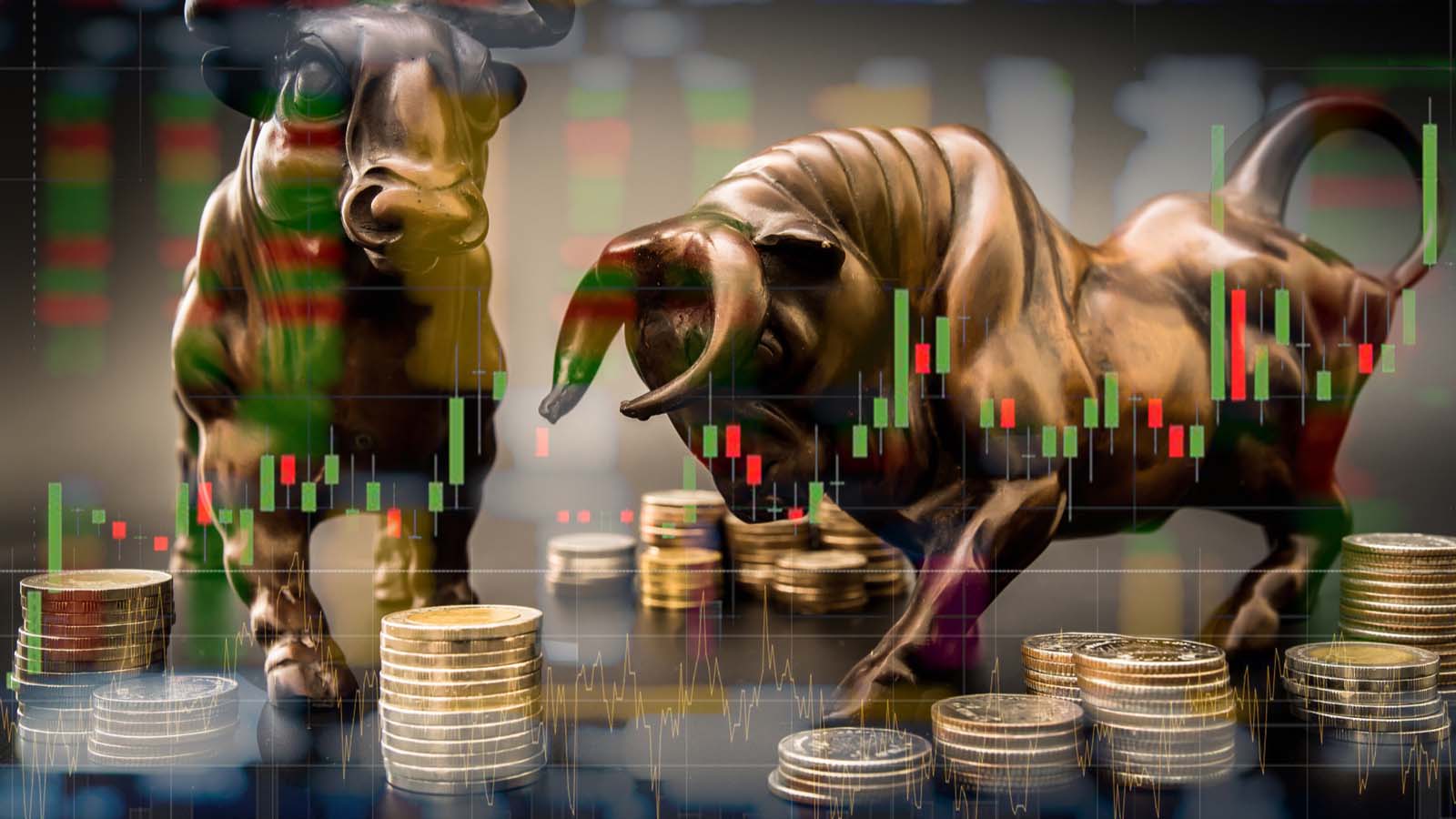New tariff saber-rattling from Trump … is bearish sentiment a contrarian buy signal? … why the Mag 7 stocks could be underpriced … Bitcoin needs a spark
New tariff threats are weighing on Wall Street.
This morning brought news that President Trump is considering broadening the scope of U.S. tariffs to include a blanket 25% levy on imported automobiles, pharmaceuticals and semiconductors.
But 25% could simply be the starting point. According to Trump, the levy could “go very substantially higher over a course of a year.”
Here’s more from CNBC:
The threat represents a broadening in the administration’s aggressive trade policy that already has included 25% tariffs on steel and aluminum imports set to take effect in March…
The nations with the biggest auto exports to the U.S. are Mexico, Japan and Canada…
[The new tariffs] could start as early as April 2.
The uncertainty surrounding tariffs is likely contributing to recent investor bearishness
The latest weekly survey from the American Association of Individual Investors’ (AAII) revealed plenty of pessimism.
More than 47% of respondents reported a bearish outlook – that’s the highest “bearish” percentage in the past year.
But Louis Navellier’s favorite economist, Ed Yardeni, believes investors aren’t downbeat on stocks; rather, they have Trump-based uncertainty:
The mood is confused. They don’t know which policies are going to stick and which ones aren’t.
It isn’t necessarily bearish, it is just not bullish.
Trump is clearly willing to use tariffs; the uncertainty is whether they’ll be used as a negotiation tool or will be permanent.
So far, “tool” seems to be what Trump intends.
From CNBC:
Trump said the tariffs already are having the desired effect, with companies domiciled overseas wanting to come back to the U.S.
“I’ve been contacted by some of the biggest companies in the world, and because of what we’re doing economically and through tariffs and incentives, they want to come back into the United States,” he said.
“When they come back into the United States and they have their plant or factory here, there is no tariff,” Trump added. “So, we want to give them a little bit of a chance.”
Our hypergrowth expert Luke Lango believes these tariffs are more “bark than bite”
Here’s Luke in his Innovation Investor Daily Notes:
The tariff drama is not going to end anytime soon. But it has become clear that the White House intends to use tariffs as a strong-arm negotiating tactic and does not want to impose any significant or lasting tariffs.
Therefore, we think market observers should view the tariff drama as “all bark, no bite” for now.
So long as tariff drama remains mostly bark, stocks should keep pushing higher because the rest of the fundamentals in the market are very strong.
Despite this overall bullishness, Luke does expect more volatility. But this is what he has referred to as the “dance of 2025” – two steps forward, one step back:
It won’t be a smooth ride higher from here into the end of the year.
We expect that geopolitical headwinds won’t remain on the sideline for long. We think they’ll come back into the fold within the next few months and shake things up on Wall Street. That is why we advise trimming into market strength over the next few weeks.
But… when that pullback does come… we’ll be ready to buy the dip… because the primary trend for markets should remain positive in 2025.
There will just be a few (or maybe a lot) of bumps along the way.
Buy the dips. Trim the rips.
Speaking of “trim the rips,” a much-deserved “congratulations” goes to Luke’s Innovation Investor subscribers. Here in February, they’ve been busy taking profits:
- Feb 4: Spotify (SPOT) +150%
- Feb 5: Intapp (INTA) +100%
- Feb 6: Arm (ARM) +50%
- Feb 10: monday.com (MNDY) +75%
- Feb 11: Fidelity National Services (FIS) +45%
- Feb 13: CyberArk Software (CYBR) +55%
- Feb 14: JFrog (FROG) +20%
- Feb 18: Tempus AI (TEM) +50%
To learn more about joining then, click here.
Returning to the bearish AAII Weekly Survey from a moment ago…
As we just highlighted, more than 47% of respondents reported a bearish outlook, the highest percentage in the past year.
This type of broad pessimism can be a contrarian buy signal.
After all, an analysis comparing sentiment with ensuing market returns reveals that the most bearish sentiment levels often kick off some of the most bullish market runs.
Conversely, when everyone is bullish, that’s when forward returns often disappoint.
Below is a chart from Advisorpedia illustrating these dynamics.
If you can’t read it, the takeaway is that the 12-month return after a sentiment peak averaged just 3.5%. But the 12-month return after a sentiment trough averaged 24.1%.
Buying amidst the fog of Trump’s tariff saber-rattling feels uncomfortable; but don’t forget the wise words of billionaire Rob Arnott, founder and chairman of the board of Research Affiliates:
In investing, what is comfortable is rarely profitable.
Bottom line: Don’t overextend yourself, but history suggests that current tariff wars won’t end with an economic meltdown…which means if you’re eyeing a great stock trading at a tariff-impacted reduced price, it could be a buying opportunity.
If you own one or more of the Magnificent Seven stocks, get ready to sleep easier tonight
The Mag 7 stocks are richly priced today after the last two years of extraordinary market performance.
As you’ll recall, in 2023, they collectively surged 111%. That crushed the 9% performance of the S&P-ex-Mag-7s.
That dominance slowed but didn’t disappear last year. The Mag 7s climbed about 67% while the S&P climbed 23%.
This outsized price run-up is why many analysts say it’s the rest of the S&P 500 (we’ll call them the “Not as Magnificent 493”) that offer far more attractive valuations.
Well, according to Bridgewater, that’s not true.
The Mag 7 stocks trade at roughly 27 times their estimated forward 12-month earnings. The rest of the S&P trades at what would appear to be a far more attractive 20X multiple.
But earnings aren’t static. To get a better feel for which bucket of stocks might offer the more attractive valuation today, we must factor in the rate of earnings growth. And that’s where Bridgewater gives the edge to the Mag 7s.
From MarketWatch:
The Magnificent Seven need to grow earnings per share by 14% per year over the next decade to earn a normal risk premium over bonds, which is a lower bar than the 20% they have achieved recently.
The rest of the tech sector also needs to grow earnings that quickly, but they have grown only 4% per year over the last decade, according to Bridgewater calculations.
The other 55% of the S&P 500, outside of tech, needs to collectively grow earnings per share by 8% per year for the next 10 years to earn a normal risk premium, which is lower than the half of the market represented by the Magnificent Seven and the rest of tech, but higher than the 5% the other companies have achieved in the past, [Karen Karniol-Tambour, Bridgewater’s co-chief investment officer] says.
In other words, yes, the Mag 7 stocks are pricy in absolute terms; but when we factor in their anticipated earnings growth rates relative to recent performance, they’re not as expensive.
Meanwhile, the “Not as Magnificent 493” that seem more attractive require faster earnings growth rates than their actual rates in recent years. Without an acceleration, their prices today are actually expensive.
It’s a great reminder that in investing, context is critical. Absolutes rarely tell the whole story.
I can’t write about earnings growth and fundamental strength without a hat tip to legendary investor Louis Navellier
He’s made a career out of focusing on earnings strength, amassing one of the most envied track records in our industry.
Recently, Louis’ Stock Grader system flagged a semiconductor stock showing remarkable improvement in its fundamentals. The company’s grade jumped from D to B, signaling potentially significant upside.
This is a small-cap AI play that Louis believes shares similarities with Nvidia its early days (Louis got his Growth Investor subscribers into Nvidia year ago, and they’re currently sitting on 3,235% gains).
Better yet, this stock is still flying under Wall Street’s radar. You can learn more here.
Bottom line: If you own the Mag 7 stocks, don’t sell them until you analyze their earnings growth rates. What appears “richly valued” on the surface could be a bargain.
Finally, the pain train rolls on for crypto investors
After hitting an all-time high of about $108,000 in December, Bitcoin has floundered.
Meanwhile, many altcoins – which appeared poised to take over leadership from Bitcoin – have struggled, and some have downright crashed.
Hang in there.
In Luke’s weekend update in Crypto Investor Network, he pointed toward five reasons why he’s confident that the entire crypto market is on the launching pad for a big move higher over the next few months.
- Rising retail participation
- Expanding corporation adoption
- Loosening regulations
- More ETF approvals
- Bullish technical setup
If you’re a Crypto Investor Network subscriber, click here to log in and read all the details. For today, let’s zero in on reason number five: the bullish technical setup.
From Luke:
While Bitcoin has plunged to [its 100-day moving average], its relative strength index (RSI) has similarly plunged into oversold territory, and its moving average convergence/divergence (MACD) lines have dropped well below zero. But that MACD signal is also on the verge of triggering a bullish crossover.
In other words, BTC is currently: 1) trying to find support at the 100-day moving average, 2) has an RSI in oversold territory, and 3) sporting a MACD on the verge of a bullish crossover.
Similar technical conditions emerged in March 2023, October 2023, January 2024, and May 2024.
In the month after the March 2023 signal, Bitcoin surged from $20,000 to $30,000.
In the month after the January 2024 signal, Bitcoin surged from $40,000 to $70,000.
In the month after the May 2024 signal, Bitcoin surged from $60,000 to $70,000.
And in the month after the October 2024 signal, Bitcoin surged from $60,000 to $100,000…
There is no such thing as a “sure thing” in the financial markets – especially for crypto. But the data overwhelmingly suggests that cryptos could be on the cusp of a big move higher over the next one to two months.
Bitcoin investors just need a spark to ignite the technical-based rally Luke mapped out.
Perhaps it will come from news of a Sovereign Wealth Fund that includes Bitcoin?
From White House Crypto Czar David Sacks two weeks ago:
It’s possible that the Sovereign Wealth Fund could decide that they want to make bitcoin or digital assets part of its portfolio.
Here’s Luke’s take:
If the U.S. sovereign wealth fund starts buying Bitcoin, so will every major sovereign wealth fund in the world…
And if all these sovereign wealth funds start buying Bitcoin, that will normalize adding Bitcoin to the balance sheet on a global scale. Soon thereafter, you could see lots of major corporations buy Bitcoin, too.
Then, suddenly, every deep-pocketed country and company in the world is buying Bitcoin.
Bottom line: Crypto isn’t out of the woods, but there are reasons for optimism.
Most importantly, remember: Volatility and disappointments are the price of admission for this explosive corner of the investment markets. But no other asset class has the same overnight wealth potential.
Don’t overextend yourself. Don’t bet too big. But stay long crypto.
Have a good evening,
Jeff Remsburg











